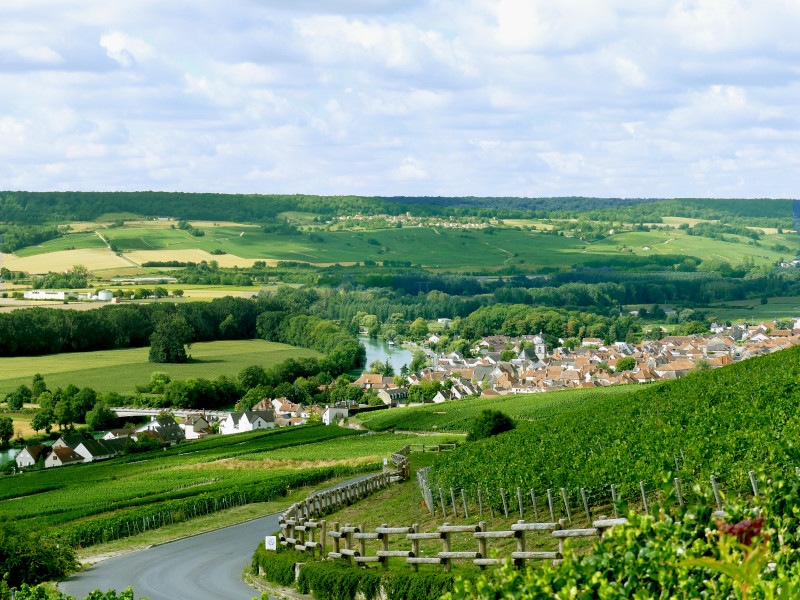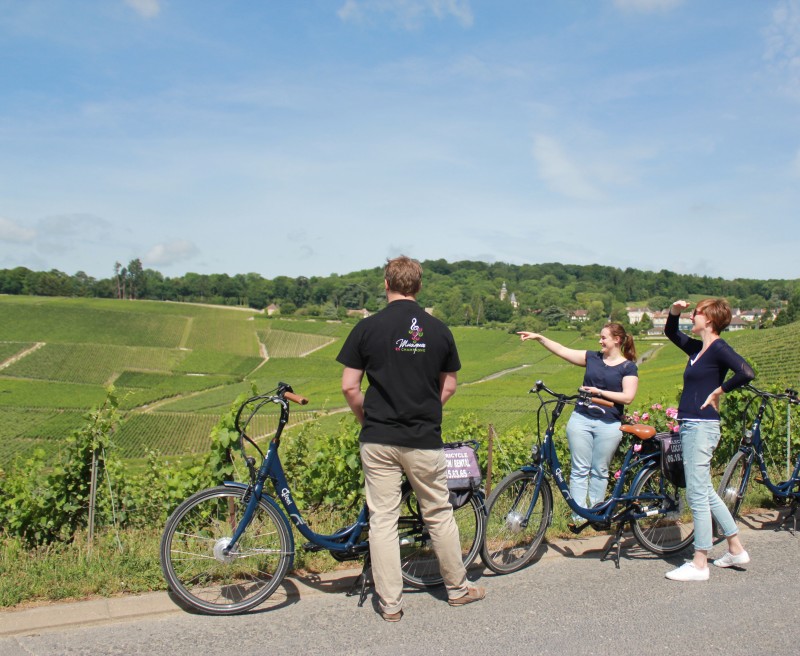the cradle of Champagne.
On the slopes of the Reims mountains in the Marne valley, just above the vineyards and below the forest, lies the small village of Hautvillers. It would have been just one of the many villages in the Champagne region, were it not for it’s abbey and the man that lived there from 1668 till 1715: Dom Perignon.
After it’s foundation in 650 AD by St Nivard, the benedictine abbey Saint Pierre had a rather hectic history: destroyed by the Normans in 882, restored then burned by the English in 1449, rebuilt in 1518 then razed by the Huguenots in 1564. Gifts of Catharine de Medici (1519-1589) made it possible to rebuild the abbey yet again. In 1668 Dom Perignon entered the abbey and in 10 years time rose to the function of treasurer and cellarmaster. He found ways to improve the quality of the wine that led to the creation of champagne as we know it today.
Off we go with the minivan for an afternoon exploration. From our mooring place near Epernay, we soon climb the steep slope, surrounded by vineyards, to one of Hautvillers’ viewpoints. Down in the valley you can see the Marne river and the last lock of the Marne canal. On the other side, some 5km due South, lies Epernay with it’s many champagne houses. To our back, further up the hill, we notice the tower of the Saint Peter’s abbey of Hautvillers where Dom Perignon invented champagne.
 St Pierre abbey of Hautvillers © Tourist Office
St Pierre abbey of Hautvillers © Tourist Office
 Hautvillers view to Cumières and the Marne river © KR
Hautvillers view to Cumières and the Marne river © KR
A visit to this charming, picturesque village is best done on foot. Let’s start with the small road that goes up to the abbey church tower. The wash basin of the monks is now beautifully filled with flowers. Unfortunately, the abbey itself is now privately owned by Moët et Chandon and not open to visitors. But the church is still used by the parish and is open to the public. Inside you can see how the church evolved through many renovations and extensions from Roman to Gothic style. In front of the altar, 2 large toombstones mark the graves of Dom Ruinart and Dom Perignon.
 Gravestone of Dom Perignon © KR
Gravestone of Dom Perignon © KR
 A visit to Hautvillers’ church © KR
A visit to Hautvillers’ church © KR
As you walk through the streets and alleys of Hautvillers, notice the many wrought iron signs on the houses’ facades. In times gone by, they indicated the trade of the inhabitants. Now they are mainly decoratif. There are about 140 of them, the one more beautiful and artistic than the other. Whichever road or alley you take, you’ll arrive at the otehr side of the village. Here is the Tourist Information office, the café d’Hautvillers (pub), and for the champagne lovers, a bit further up the street, there is the bar “Au 36”. Just around the corner is the old washing basin from 1833 where village women did the laundry. From here, it’s just a short walk back to the abbey and the minivan.
 Dom Perignon wrought iron sign © KR
Dom Perignon wrought iron sign © KR
 Bar Au 36 © Tourist Office
Bar Au 36 © Tourist Office
 Hautvillers Washing Basin from 1833 © KR
Hautvillers Washing Basin from 1833 © KR
For the more sportive visitors, the Tourist Office organises guided tours by e-bike into the vineyards surrounding the village. With stops at several spots, you learn a lot about wine growing, soil and terroir while enjoying the view on ever changing landscape. Whatever way you visit Hautvillers, by minivan, by foot or by e-bike, don’t forget to visit a local wine grower for a champagne tasting. Cycling tour on e-bike around Hautvillers © Tourist Office
Cycling tour on e-bike around Hautvillers © Tourist Office
More information on Hautvillers can be found here:
Walking in the footsteps of Dom Perignon
Champagne cruise on Barge Johanna.

